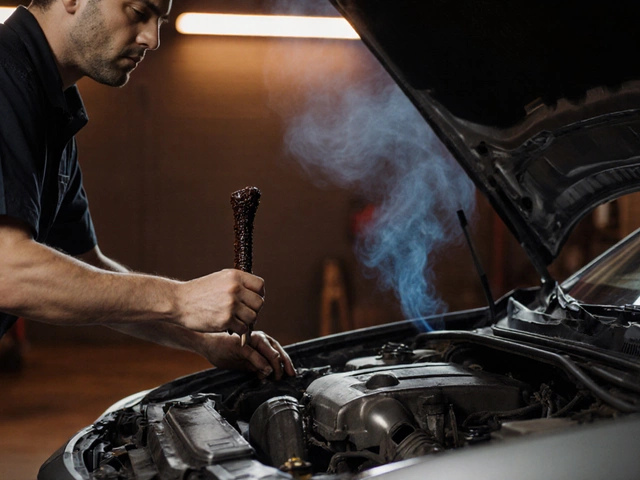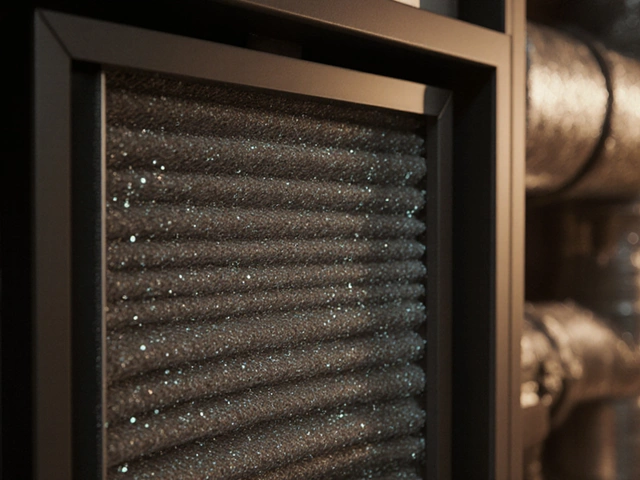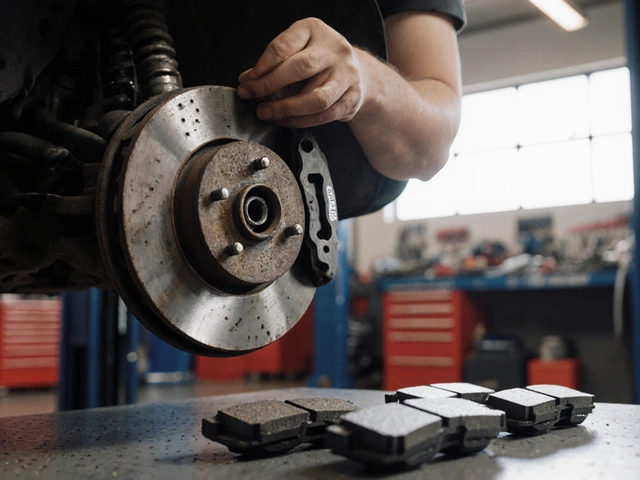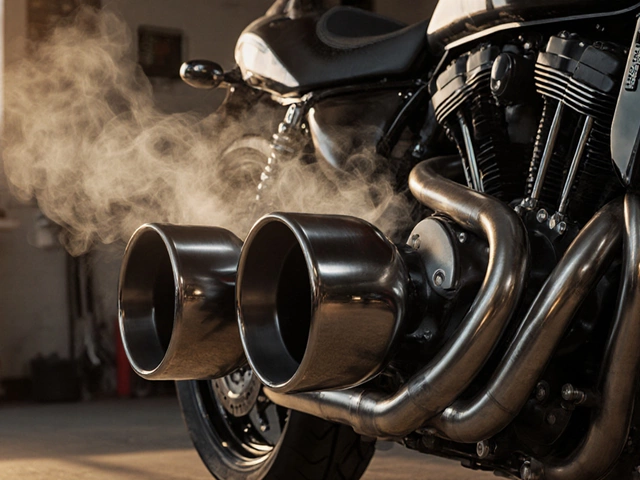
Ever wondered if you could just push your luck and drive with a bad radiator? Maybe you’re running late, or you just don’t want to shell out for a tow. Here’s the blunt truth: your radiator isn’t just another part—it’s what keeps your engine from cooking itself alive. Ignore it, and the risks pile up fast.
First, you have to know that once a radiator starts leaking or clogging, your engine’s temperature can shoot up before you know it. Some drivers think topping off coolant will buy them time, but if the radiator can’t do its job, all you’re really doing is buying a few extra hot minutes. The real danger? Overheating can warp your engine’s head, blow the head gasket, or even seize the whole thing. Every extra mile could mean hundreds (or thousands) more in repairs later.
- What Your Radiator Actually Does
- Signs Your Radiator Is Going Bad
- What Can Happen If You Keep Driving
- Emergency Tips If You're Already on the Road
- How to Fix or Prevent Radiator Trouble
What Your Radiator Actually Does
Your radiator is the unsung hero that keeps your engine healthy when you drive. It takes the brutal heat your engine makes and gets rid of it before things get out of control. Without a working radiator, cars would overheat after just a few minutes on the road—seriously, that quick.
Here's what happens: coolant flows through your engine and soaks up the heat. That hot coolant moves into the radiator, where it spreads out into thin tubes and is cooled down by air blowing through the front grill. The coolant, now much cooler, then loops back into the engine to repeat the whole cycle. Simple, but super smart.
Want numbers? The average modern car runs best between 190°F and 220°F. If the radiator isn't doing its job, temperatures can skyrocket past 250°F in minutes, and that's when metal parts start to warp and rubber seals fail. Not good.
| Part | Function |
|---|---|
| Radiator | Removes heat from coolant |
| Coolant | Carries heat away from engine |
| Thermostat | Controls when coolant flows |
| Cooling Fan | Increases airflow at low speeds or while stopped |
If you ever wondered why those big trucks and SUVs have giant radiators, it’s because bigger engines make more heat, and they need even more cooling muscle to keep things under control.
Long story short: the radiator isn’t just under your hood for looks. Its job is critical, and if it fails, you’re facing some of the most expensive repairs your car can throw at you.
Signs Your Radiator Is Going Bad
If you’re dealing with a bad radiator, catching red flags early could save your wallet and your engine. Radiators don’t just go from perfect to busted—the warning signs are usually right in your face if you know where to look.
Here’s what to watch for:
- Coolant Leaks: Spot a sweet-smelling, bright green, orange, or pink liquid under your car? That’s your coolant escaping. Even a small puddle can mean your radiator’s got a crack or loose hose.
- Rising Temperature Gauge: If the temp needle creeps past the halfway mark often, your radiator might be struggling. Warning lights for engine temp are a huge red flag—don’t ignore them.
- Frequent Overheating: Repeatedly seeing steam from under the hood, especially in traffic, means the cooling system isn’t doing its job. Normal driving shouldn’t cause the gauge to spike or the car to stall from heat.
- Discolored or Sludgy Coolant: Open your coolant reservoir (when it’s cold!) and check the color. If it looks rusty, brown, milky, or chunky, things are going wrong inside the radiator. Healthy coolant is usually bright and clear.
- Visible Rust or Damage: Flakes, corrosion, or crusty spots on the radiator itself are bad news. They weaken the whole thing and block coolant from flowing properly.
- Low Coolant for No Good Reason: If you’re topping up the reservoir way more often than normal, there’s almost always a leak, and the radiator is a prime suspect.
- Odd Engine Smells: A strong, hot, syrupy smell in the cabin or around the hood usually points to a coolant leak from somewhere up front.
People often ignore these because they seem like little issues on their own. But according to auto repair data sites, coolant system issues are the root cause of nearly 30% of unexpected engine breakdowns. It’s not just about comfort—it’s about keeping your car out of the scrapyard.

What Can Happen If You Keep Driving
So, what really happens if you keep driving with a bad radiator? It’s not just about a little extra heat under the hood. You’re gambling with your whole engine. Here’s the straight talk—problems go from bad to worse fast.
- Overheating nightmare: The first thing you’ll notice is the temperature gauge climbing. Most engines aren’t built to handle high heat for long. One or two bad trips and you could have a warped cylinder head or fried engine block. That turns a couple hundred bucks into a multi-thousand dollar repair.
- Blown head gasket: Heat from a failing radiator can fry the head gasket. That leads to coolant mixing with oil—pretty much a death sentence for your engine. Not to mention, you’ll see white smoke and lose power quickly.
- Breakdowns on the road: Cars with a bad radiator break down more often. You might get stuck with steam blasting out of the hood and end up stranded somewhere you really don’t want to be.
- Catastrophic engine damage: Ignore the warning signs, and you’re looking at engine seizure. That means the metal inside melts, fuses, or cracks. Most engines never come back from that kind of punishment.
- Extra costs everywhere: Towing, rental cars, missed work—costs stack up way faster than most people expect. Letting a radiator problem go can easily end up being the most expensive decision you make all year.
If you think nobody actually lets a car go that far, check out these real numbers.
| Issue | Average Repair Cost (USD) |
|---|---|
| Radiator replacement | $600-$900 |
| Head gasket repair | $1,200-$2,000 |
| Engine replacement | $4,000-$7,000 |
It’s wild how skipping a radiator fix can turn a $600 job into a $7,000 disaster. If your radiator is acting up, the smart move is to play it safe. Saving money now can end up costing way more than you ever planned.
Emergency Tips If You're Already on the Road
So, you’re already out there, and you figure your bad radiator is about to leave you stranded. Don’t panic—there are a few tricks you can use to buy yourself time or, at the very least, protect your engine from total meltdown. Here’s what you can do while trying to get home or to a shop:
- Turn off the A/C and crank up the heat. Weird, right? Running your heater actually pulls extra heat away from your engine. It’s not fun in the summer, but it can make the difference between a safe arrival and a dead engine.
- Watch your temp gauge like a hawk. The second you see that needle creeping toward hot, find a safe spot to pull over and shut off the engine. Waiting just five or ten minutes can avoid major damage.
- Top off the coolant if you have it. Even with a bad radiator, a little more coolant can help for a short distance—just let your car cool before popping the cap (otherwise, you risk a faceful of boiling steam).
- Drive in short bursts. If you absolutely must keep going, drive a bit, then pull over and let things cool off. Repeat until you’re somewhere safe.
- Keep a close eye for leaks. Sometimes a quick fix like duct tape or a radiator sealer from an auto parts store can slow things down enough to let you crawl home. Don’t expect miracles—this is just a band-aid.
One more thing: If you see steam gushing from under your hood, or if your temp gauge goes deep into the red, stop immediately. Pushing on will almost always mean major repairs—at least a blown head gasket and, in the worst case, a toasted engine.
To give you an idea about what usually happens during overheating due to radiator trouble, check this out:
| Time Spent Overheating | Potential Damage |
|---|---|
| 5 minutes | Warped cylinder head, small leaks |
| 10 minutes | Blown head gasket, serious leaks |
| 20+ minutes | Engine seizure, total breakdown |
Best tip: when in doubt, call roadside help or a tow truck. Your wallet will thank you later.

How to Fix or Prevent Radiator Trouble
If you want to dodge the headaches that come with bad radiator issues, a little TLC goes a long way. Let’s break it down—
Fixing a radiator problem depends on what’s actually wrong. Here’s how to tackle the most common hiccups:
- Leaking coolant: Check for cracks or loose hoses. If it’s a hose or clamp, you can tighten or swap it yourself. If the radiator itself is cracked, you’ll need a pro or a replacement. Those stop-leak products from the store might help in a pinch, but don’t count on them long term—they’re more like a band-aid than a real fix.
- Overheating: If your car is running hot, see if the fan is working. A bad radiator fan or a stuck thermostat will keep heat from moving out of the engine. Sometimes, flushing out the old coolant (a full coolant flush) can fix minor clogs or built-up junk.
- Rust or gunk: Pop the radiator cap (when the engine is cool—never when it’s hot!) and look inside. If the coolant is brown or sludgy, you’re overdue for a flush. Dirty coolant doesn’t pull heat like it should, meaning you’ve got a car maintenance chore on your hands.
Now, let’s talk about keeping your car radiator out of trouble in the first place. These habits save money and stress:
- Check your coolant level and color every month—cloudy, rust-colored, or oily coolant is a red flag.
- Change coolant as your owner’s manual says—most cars need a flush every 30,000 to 60,000 miles. Don’t skip it.
- Look underneath after parking; fresh puddles or drips might mean radiator trouble is brewing.
- Keep an eye on your temp gauge when driving, especially in stop-and-go traffic or on hot days.
- Replace hoses and clamps every few years, or if they feel soft and spongy.
Want some real-world numbers? According to a national auto repair chain, over 25% of overheating breakdowns are traced back to worn-out radiators, blocked coolant flow, or old hoses. Skipping radiator maintenance can turn a $30 hose into a $2,500 engine meltdown faster than you’d think.
Bottom line: staying on top of radiator problems isn’t rocket science, but ignoring the signs can wreck your ride. Watch for leaks, watch your temp, and don’t gamble with overheating.





